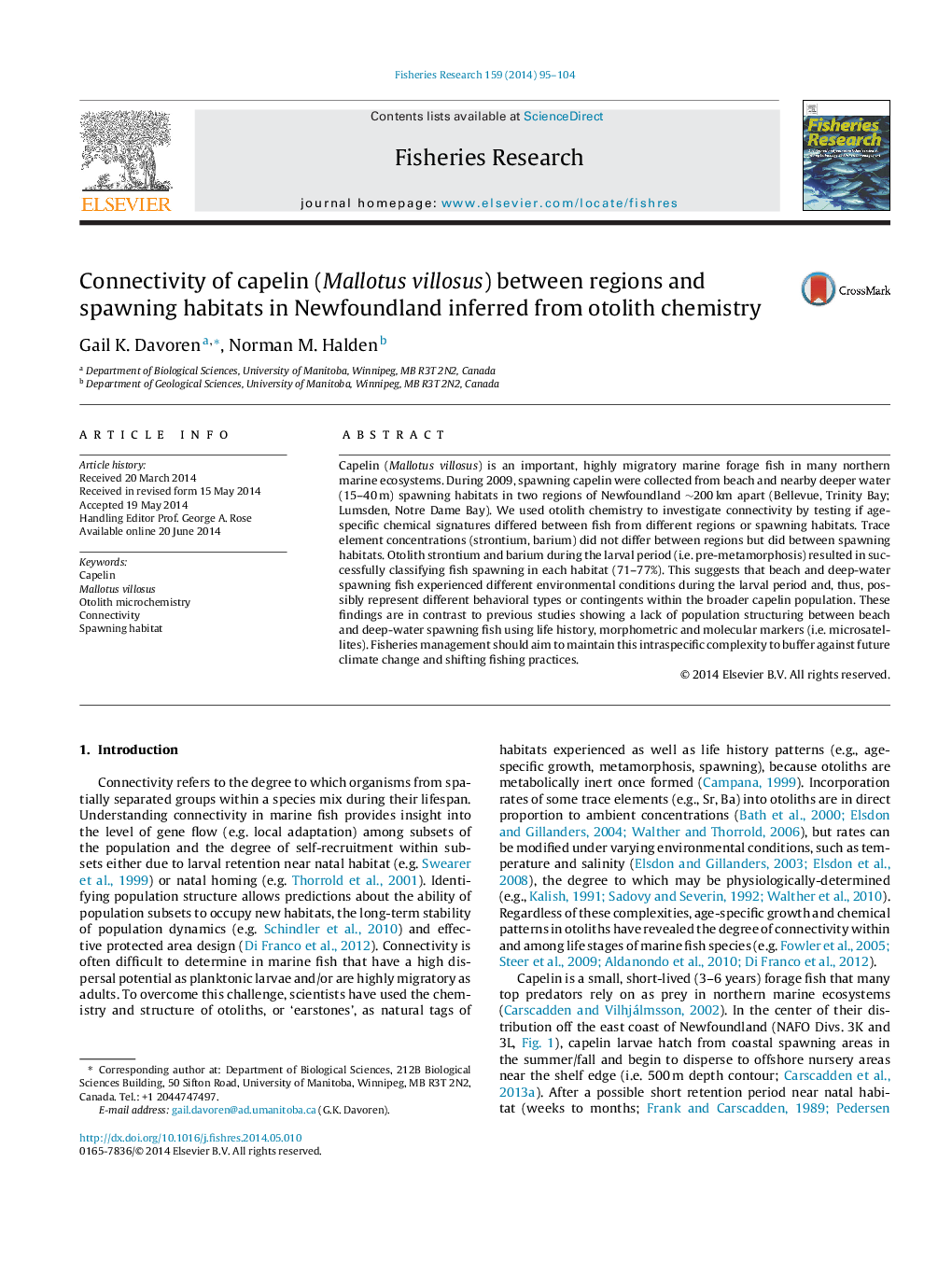| کد مقاله | کد نشریه | سال انتشار | مقاله انگلیسی | نسخه تمام متن |
|---|---|---|---|---|
| 4542986 | 1626809 | 2014 | 10 صفحه PDF | دانلود رایگان |

• We use otolith chemistry to investigate connectivity of Newfoundland capelin.
• Otolith chemistry did not differ between fish spawning in regions ∼200 km apart.
• Otolith chemistry differed between fish in beach and deep-water habitats <10 km apart.
• Otolith chemistry as larvae classified fish into beach and deep-water habitats.
• Findings indicate previously undocumented population complexity.
Capelin (Mallotus villosus) is an important, highly migratory marine forage fish in many northern marine ecosystems. During 2009, spawning capelin were collected from beach and nearby deeper water (15–40 m) spawning habitats in two regions of Newfoundland ∼200 km apart (Bellevue, Trinity Bay; Lumsden, Notre Dame Bay). We used otolith chemistry to investigate connectivity by testing if age-specific chemical signatures differed between fish from different regions or spawning habitats. Trace element concentrations (strontium, barium) did not differ between regions but did between spawning habitats. Otolith strontium and barium during the larval period (i.e. pre-metamorphosis) resulted in successfully classifying fish spawning in each habitat (71–77%). This suggests that beach and deep-water spawning fish experienced different environmental conditions during the larval period and, thus, possibly represent different behavioral types or contingents within the broader capelin population. These findings are in contrast to previous studies showing a lack of population structuring between beach and deep-water spawning fish using life history, morphometric and molecular markers (i.e. microsatellites). Fisheries management should aim to maintain this intraspecific complexity to buffer against future climate change and shifting fishing practices.
Journal: Fisheries Research - Volume 159, November 2014, Pages 95–104